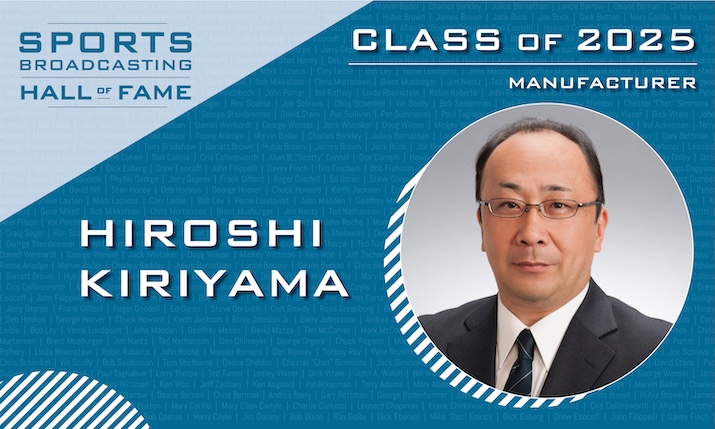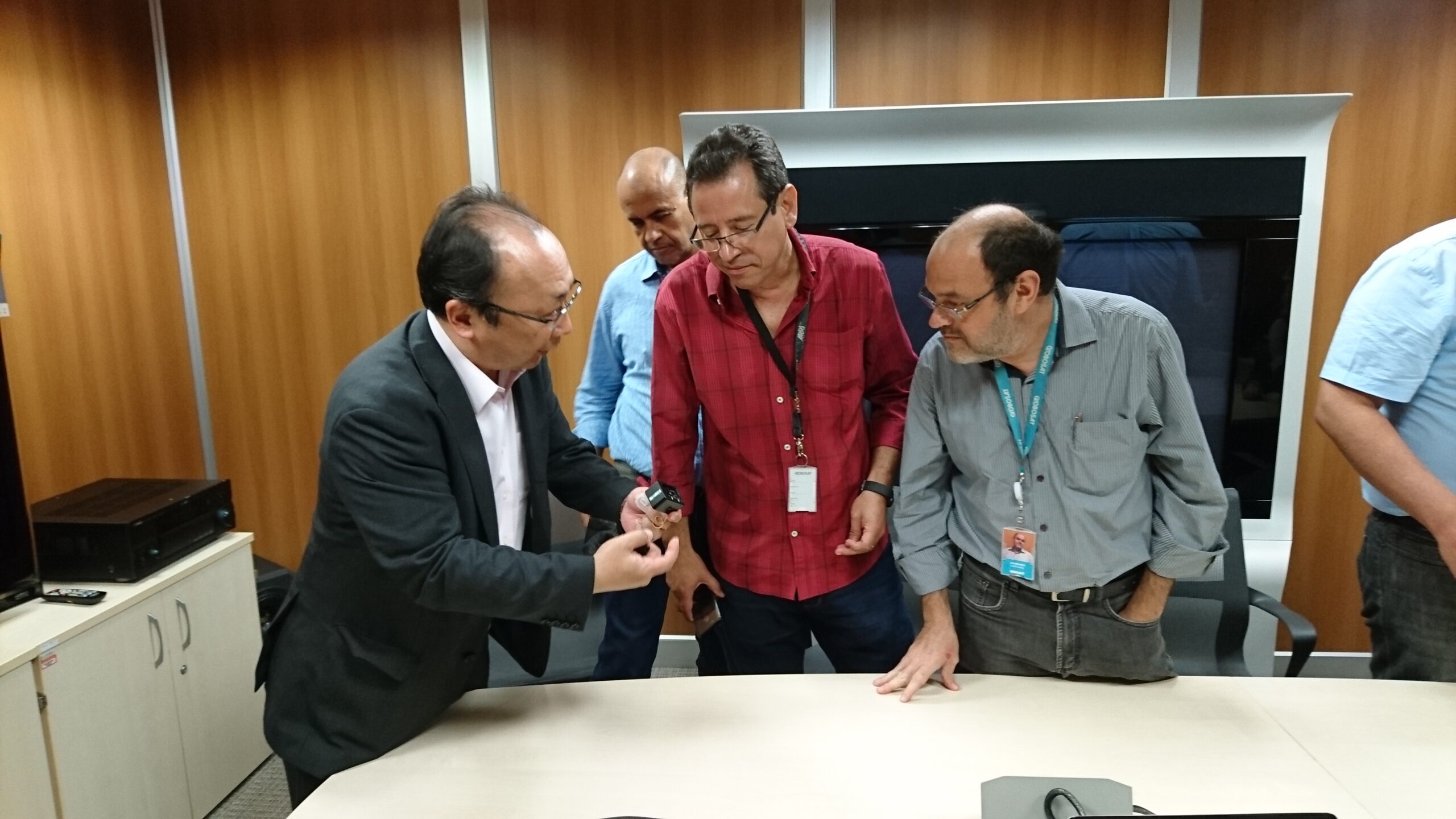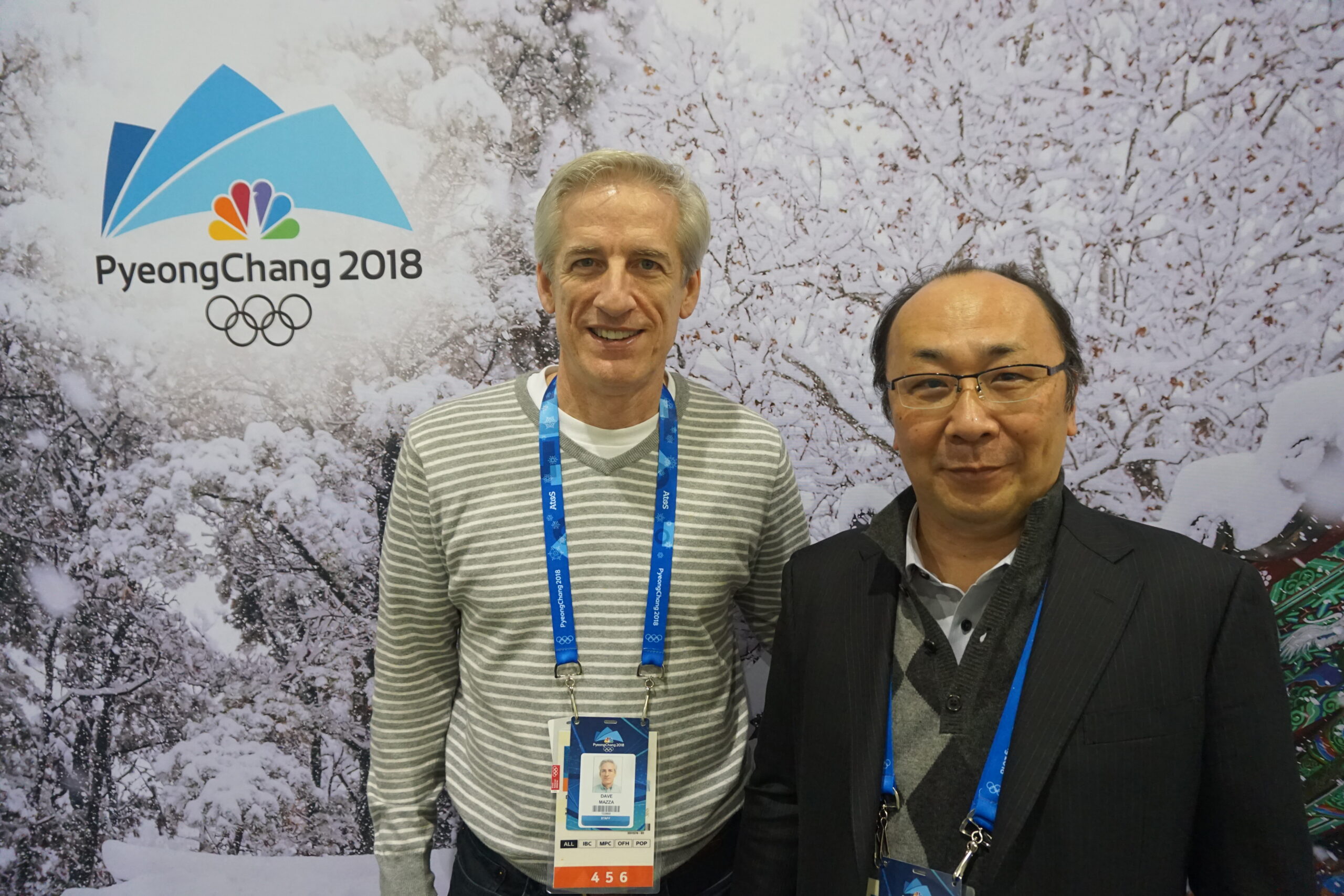2025 Sports Broadcasting Hall of Fame: Hiroshi Kiriyama, Sony Broadcast (and Industry) Technology Icon
Story Highlights
If you have ever relied on a Sony HDCAM-SR VTR or Sony camera with 4K 3-CCD sensors, you have Hiroshi Kiriyama, retired CTO of Sony’s Professional Division, to thank: he played lead engineering roles in their development. Perhaps his greatest achievement was development of the HDC-5000 and 3000 camera series, which have become the world leaders in 4K, 1080p, 1080p HDR, and 4K HDR production.
 Born in Nagasaki, Japan, Kiriyama started early on the path to that achievement. As a child, he says, he had a vague thought of becoming either an engineer or a government official at Japan’s Ministry of Education. “I was in the Communications Club in both elementary and middle school. Elementary school was only audio, but my middle school had black-and-white TVs in all the classrooms, and I was the anchor person for the interschool news, addressing in front of a Sony camera.”
Born in Nagasaki, Japan, Kiriyama started early on the path to that achievement. As a child, he says, he had a vague thought of becoming either an engineer or a government official at Japan’s Ministry of Education. “I was in the Communications Club in both elementary and middle school. Elementary school was only audio, but my middle school had black-and-white TVs in all the classrooms, and I was the anchor person for the interschool news, addressing in front of a Sony camera.”
Even at university, he wasn’t thinking of becoming a TV engineer or an electrical engineer. “I spent most of my time playing Mahjong, softball, and baseball and being with friends,” he recalls. “In my senior year, one of my senior university colleagues, who had started working at Sony, told me that the technical advancement in the broadcast industry was yet to come. Learning that encouraged me to join Sony and become part of the broadcast-technology group.”
Sony would be not only his first job — he joined the company in April 1982 — but his last: he retired from Sony in November 2024.
In 1982, the broadcast industry was in relatively mature technologically. But, as his friend noted, it was about to become a hot bed of innovation. The early 1990s saw the introduction of solid-state imaging sensors, which replaced tube cameras; digital tape formats; and, of course, HDTV.
Kiriyama’s first big project was the telecine, a product that converted film to a video signal, handling contents originally captured by film and laying the foundation for HD postproduction.
“Developing Sony’s telecine product gave me the most learning experience,” Kiriyama says of his formative years at Sony. “It was a product used in the highest-picture-quality industry at the time, and it consisted of multiple technical aspects.”
It was also at the center of the postproduction world and prompted him to learn content production from creation to editing. “I had to understand the total workflow,” he says, “how our product would fit into the total workflow, what other products existed, and how to make interfaces with those products. Sony had little knowledge of this industry, and, as I was the project leader, I took the initiative to learn and discover all those.”
Just how far-reaching was his learning during that period? Kiriyama lists the key concepts, and they include issues still being discussed and worked on today:
- Film-to-video transfer technology, including conversion from 24p to 60i, 3:2 pulldown, audio syncing, and workflows for dailies and feature films
- Film characteristics and how it was processed in the lab
- Optical technology: spectral sensitivity of the image sensor, photosensitivity characteristics of the film, lighting, LED characteristics and color rendering
- Lens, image sensors, camera-signal processing, video-signal processing
- Image quality: working with colorists to understand what makes a quality video-based image
- Different types of “noise”: film grain, image sensor, lens distortion, video compression, video processing, etc.
- Other products in the workflow: color grading, VFX, NLE, servers, monitors, and cinema projectors
“This telecine experience built my professional foundation and taught me the importance of being in the industry and truly understanding how different pieces of puzzle come together to create the value,” he adds. “Following the telecine days, I learned real-time, multichannel, in-sync signal-processing and transmission technologies and came to work in the world of multicamera live production.”
Anyone who was in the industry during the late ’80s and early ’90s can remember the first time they saw HDTV or the image quality of a digital-tape format or hearing a truly immersive Surround Sound experience. Kiriyama was one of the industry leaders who ensured that impressive visual and auditory experiences continued to improve.
He moved quickly from VTR engineer, to leading developer of telecine products, and to project owner of a large project within Sony’s VTR division. As the project owner, he developed the industry-standard HDCAM-SR VTR, and the success of that platform led the corporation to promote him to lead its entire broadcast and production division.
It was there that he demonstrated his outstanding ability to listen to the customer. “My motivation to go after improvements is to show the improved results and see happy and amazed expression on our customer’s face,” he explains. “In other words, my motivation was always to exceed what our customers may expect. And my true learning as an engineer came from the customers that I engaged with.”
In addition, there was the thing that drives many innovators: their own excitement. “Another motivation,” Kiriyama adds, “is to see image qualities that I have not seen yet and to be the first one to see [those qualities].”
The motivation to keep both customers and himself excited is one of the factors that drove him to lead development of a 4K three-chip camera that could do slow motion. Many in the industry considered it an impossibility, but Kiriyama and his team made it a reality, launching the HDC-4300, a 4K three-chip camera that could do 8X super-slow-motion in HD.
The system was an example of Sony’s U.S.- and Japan-based teams working closely together and with U.S. customers. The camera implemented 2/3-in. CMOS imagers with full 4K resolution, resulting in remarkable HD and 4K pictures; afforded multiple frame-rate imaging; enabled 4K and HD HDR images; and enabled creation of multiple HD cutout images from the 4K image canvas.

Accepting the Philo T. Farnsworth Corporate Achievement Award in 2017 for Sony: Kiriyama (center), John Studdert (left), and Mikio Kita (Photo: Jordan Strauss/Invision for the Television Academy/AP Images)
On behalf of Sony, Kiriyama accepted an Emmy Award for Engineering Excellence for the HDC-4300 in 2016 and the Philo T. Farnsworth Corporate Achievement Award in 2017. “Sony takes great pride, and I personally take huge pride” in being involved in this work, he said in accepting the latter. “This is the best industry to be in, and it is our wish to continue contributing to the production industry.”
Kiriyama’s management prowess and dreams for better resolution spurred Sony to keep moving forward. The subsequent HDC-4800 can do 4K at 8X super-slow-motion, and the UHC-8300 is a three-chip 8K camera.
Kiriyama was also lead advisor on development of the Sony Venice and Venice 2 cinema cameras, but his influence did not stop with cameras. He was a force behind the development of Sony’s 4K HDR BVM-X300 master monitor, micro-LED technology, and Crystal LED tech and the virtual-production solution based on CLED.
When it comes to sports, a visit to the US Open tennis tournament and the TV compound there galvanized his interest in getting closer to sports-broadcast technology. “It was my first visit to a U.S. major sporting event,” he says. “I saw many people with various assignments, running around, under well-polished management systems. I was amazed to see how the teams prepared to deliver live sports, an unscripted event, no matter what happens in the game. That experience gave me the wish to contribute to the world of live sports broadcasting.”
From 1982 to 2024, the corporation grew and transformed itself (sometimes through acquisitions of companies like Hawk-Eye), and Kiriyama says a sense of achievement and sharing in that as a team is important in finding the next success.
“I think it is OK for each member of the team to have different motivation, different targets, and different reasons to be there,” he says. “Despite having different targets, the team achieves its goal together, and this, I think, is another form of teamwork.”
Recently retired, Kiriyama says he is filled with gratitude: “Gratitude for the industry of live sports production, for the customers who taught so much valuable lessons, and to my colleagues who fought the battles together, sharing the same dream and same value.”



